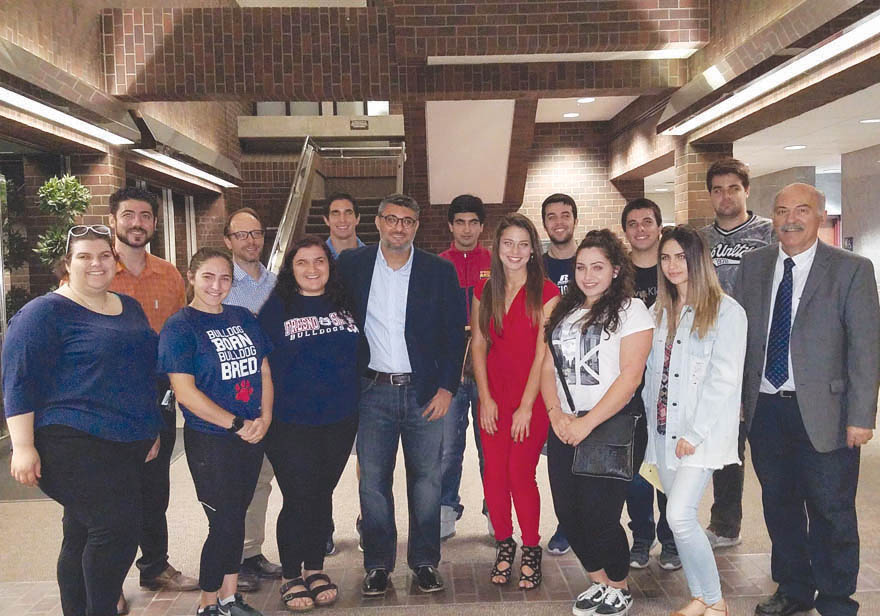
Annie Rubio
Editor
Throughout the deportations and mass atrocities committed during the Armenian Genocide, one member of the Turkish government appeared as a source of hope and benevolence. Cemal Pasha, governor of Adana and Greater Syria, was said to have lenient policies regarding Armenians, going insofar as to face off with the other member of the Committee of Union and Progress (CUP) government. However, as argued by Dr. Ümit Kurt, Cemal Pasha’s real intent “was aimed at subduing [the Armenians], so as to make them incapable of harming the sovereignty of the Ottoman state.”
Dr. Umit Kurt, Kazan Visiting Professor in Armenian Studies, gave the first of three public lectures on September 21, titled “Rescuer, an Enigma, and a Génocidaire: Cemal Pasha. In his talk, he analyzed Cemal’s role in the Armenian Genocide under three distinct umbrellas of thought, reflecting the diverse opinions of scholars on the question.
While Cemal and the CUP did not differ in their stance on the Armenian “question,” Dr. Kurt stated that “the most fundamental difference was the methods he wanted to employ.” Thus, Cemal Pasha emerged as a strict disciplinarian and assimilationist. He systematically implemented conversions to Islam rather than institute mass exterminations. However, he has been remembered as “a rescuer,” a characteristic which has been greatly influenced by the perceptions of his victims.
Cemal is noted in many personal memoirs as a “conscientious Turk” and someone who saved many Armenians. While those accounts are true, Dr. Kurt argues, “the term rescuer cannot be applied to Cemal Pasha.” His goals were still very aligned with others in the CUP, but his choice of means were more realistic and allowed for a more prosperous “post-Armenian Turkey.”
In his assimilationist policies, Cemal Pasha was increasing his power and authority among the Armenians. The conversions provided relief to dependent Armenians, and gave an alternative to deportation (and potentially death). However, Dr. Kurt explains that Cemal was instead “reducing the Armenian population to an ethnic minority that no longer posed a threat.” Cemal would always credit himself with policies that would improve the situation of Armenians, while blaming “his friends in Istanbul” whenever decisions were detrimental to them. He continued in this way, maintaining a positive image while still contributing to the genocide.
Given the differing views on Cemal’s politics and agendas, it can be difficult to determine his role as a perpetrator in the Armenian Genocide. Rafael Lemkin, the man who coined the term “genocide,” defined forced assimilation as a cultural technique of genocide. Cemal Pasha and his solution to the Armenian “problem” are genocidal in their own right, even if they are not exterminatory in character. As stated by Dr. Kurt, “they do not absolve him[Cemal] of his own share of responsibility for the genocide.”
Dr. Kurt closed his lecture with the careful distinction that explaining a perpetrator’s actions within a genocide does not equate to forgiveness or legitimization of those actions. “We have an obligation to try to understand how people can turn into killing machines.” By understanding their ideology and motivations, the actions of Cemal and others within the CUP become less incomprehensible.
Understanding how these “regular” human beings became a part of a genocide can lead to prevention of genocides in the future.
 Hye Sharzhoom Armenian Action
Hye Sharzhoom Armenian Action